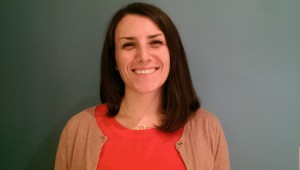About Meghan
Dr. Meghan Ferriter is an interdisciplinary researcher who currently cultivates programs of engagement and advises on workflow as Project Coordinator for the Smithsonian Transcription Center. She collaborates with volunteers and staff to increase access to and interaction with Smithsonian Institution collections. Meghan also shares with the wider cultural heritage, digital humanities, and citizen science communities the goal of increased knowledge-sharing and improving experiences in collaborative activities like crowdsourced transcription.
Her primary research explores the communication of cultural beliefs through media technologies and in media discourse; and the ways groups learn and refine understanding of social relationships through these resources – whether through political cartoons, newspaper discourse, hashtags, or user-generated content. Meghan’s research examines social identities and boundaries; processes of cultural change; language, power, representation, and discourse; and sport and popular culture. Trained as an anthropologist and cultural historian, Meghan’s doctoral thesis explored the extent of change in discourses of mediated sport (and she revels in qualitative research).
Meghan also loves to trouble the ways people use and communicate with digital media and technologies. She is interested in the transformative power and consequences of computer-mediated communication and participatory culture. Her recent research explores communities collaborating in digital platforms including Tumblr and Twitter and crowdsourcing and citizen science best practices.
Sharing stories

“A story should have a beginning, a middle, and an end… but not necessarily in that order” – Jean-Luc Godard
On a chilly March morning twilight in 2004, I found myself sitting among a motley group of two bassists and a drummer of varying celebrity plus two students in a dodgy London hotel ballroom. As cabs shuttled past the windows, one of the bassists had us enraptured with tales from touring. He knew how to expertly craft the story he shared and match it with dynamic movements and facial expressions. If I stumble in recalling the stories he shared, I’ll never forget the dramatic pauses and the way he shaped the story to suit the attention of his audience sitting at his feet. A good story is important, but so, too, is the way it is delivered.
A story. Narrative. Myth. History. Discourse. In this kind of town, people are keen to ask “what do you do” – my response used to be some version of “I explore the ways people communicate and share values in cultural products and behaviors.” That IS what I do… but that sounds a bit dull and it only captures part of my goals.
On Thursday evening, I found myself explaining my interests a bit differently. When asked what I do, I answered, “I explore the stories we tell – in person, in the media, and now in online groups – to understand what’s important to each group of people and why; I’m also interested in the WAYS they tell stories: the techniques and technologies they use.” This answer caused my partner in conversation to light up. Although I think I was half-elevator pitching and half-musing aloud, now I think I might be on to something with this description.
From the time we are young, we read and tell stories – we fall in love with adventurous books and characters on screen, we hear parables each weekend and use stories to reinforce grammar, we talk about world events and find the twists and turns of “facts” changing the story. We make meaning by aggregating stories and filtering our experiences through these stories.
Yet, this space is for more than merely explaining stories – this is a landing ground for consideration and discussion of the reasons why and way that we communicate; the social purposes and effects of communication techniques and technologies.
Indeed, it seems we’ve found ourselves in the middle of a larger story here – let’s find ways to navigate this next chapter.

